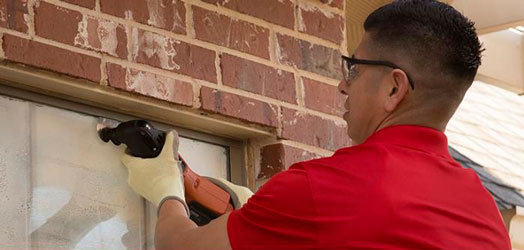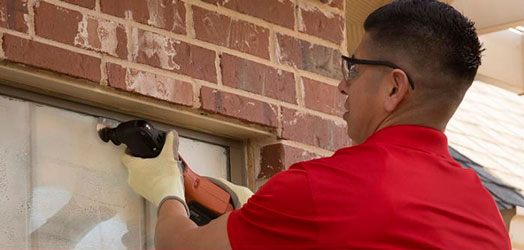As consumers begin to understand the financial advantage of adopting a more energy-conscious philosophy, energy-efficient windows have gained popularity. The consumer appeal is twofold: Energy efficient windows not only lower heating and cooling costs, but many people may be eligible for tax credits.
New windows can also increase security, offer sound insulation, or simply provide a better view. Starting a window and / or door replacement business could prove lucrative. A background in carpentry or experiencing employment with a home exterior company first can be significantly helpful. Once you’ve gained some experience, you can get down to business in this business.
Steps to Starting a Window Replacement Business
1. Obtain window and door installation training and certification through installation masters or the National Glass Association. If you have previous experience in the construction industry, you may be eligible to attend a self-study or online program.
 2. Contact your local building department or licensing agency to find out what licenses are required to operate in your city. You may need to obtain a home improvement contractor license, a construction supervisor license, or obtain lead safe certification through the Environmental Protection Agency’s Renovation, Repair and Painting Rule.
2. Contact your local building department or licensing agency to find out what licenses are required to operate in your city. You may need to obtain a home improvement contractor license, a construction supervisor license, or obtain lead safe certification through the Environmental Protection Agency’s Renovation, Repair and Painting Rule.
3. Acquire a commercial vehicle. Then fill it out with business information, such as whether you are certified, licensed, insured, and obligated to post a bond. Include your site URL and phone number.
4. Be legal. Contact your current insurance provider about purchasing business insurance and commercial auto coverage. If the insurer can’t provide you with a policy, they should be able to connect you with someone who can. Buy a contractor’s surety bond from a surety company. This assures your clients that in the event that you are unable to complete the job, they are covered. It may also be necessary when bidding on government contracts.
5. Find reputable window suppliers who offer a variety of replacement windows, such as vinyl, fiberglass, double pane, thermal, paneling, aluminum siding, garden, landscaping, window boxes, and custom windows, as well as glass and grid options. Obtain samples and develop a portfolio to show clients.
6. Develop marketing materials, such as patio signs, door hangers, and brochures. Satisfied customers can display yard signs during and after installation.
7. Develop contracts that include a basic checklist, your warranties, the expected duration of the installation, and costs.
8. Buy a website for your business. In it, include testimonials, before and after photos, glass, window and louver options, and maintenance tips. Include an “About Us” page where you discuss your background, qualifications, and commitment to customer service.
9. Go door to door handing out brochures. Contact investors and real estate developers.
Necessary aspects to start
- Business plan
- Training
- Certification
- Licenses and Permits
- Tools
- Yard signs
- Brochures
- Contracts
Advice
- After a major storm or particularly extreme weather changes, go door-to-door handing out flyers. Always look for “No Trespassing” signs and avoid those homes. You don’t want to irritate potential customers.
- Ask for a portion of the payment in advance, about 30 percent.
- Be careful in people’s houses. Wear shoe covers to prevent carry-over of dirt. Customers will appreciate the gesture.
- Join your local chamber of commerce.
- Ask satisfied customers to review your services on sites like Service Magic Y Angie’s List.
- If you have the storage space and can get deep discounts on buying in bulk, it may be worth buying popular windows in bulk.
How to set prices to start a window installation business
Demand in the window industry has been strong for centuries, as windows are necessary in the construction of almost any type of building, regardless of its purpose. Starting a showcase business can be an exciting opportunity to join this strong industry, although it can be challenging for new investors to gain market share. Pricing is an important element of your marketing mix that can set your window business apart from the pack.
Competitor prices
Looking at the existing pricing structures of the window business can be a good starting point when setting your own prices. Avoid making the mistake of simply sifting through your competitors’ prices and setting yours a little lower. This can trigger a price war that your established competitors may be more equipped to survive than you are. Rather, use your pricing models as a basis to get an idea of the general range in which your own prices should be.
Cost-based pricing
Your costs can also serve as a solid starting point in forming your pricing strategies. Consider the cost of materials, labor, and overhead, as well as your desired profit margin, to set prices based on your cost structure. Cost-based pricing can help establish an image for your business and brand in the marketplace, as higher-quality products generally carry higher costs, resulting in higher prices and a feeling of superior quality.
Volume pricing
Consider offering different price tiers for higher volume purchases, or negotiating individual prices based on volume contracts. Selling 2,000 windows to a large company at a 20 percent margin, for example, can be much more profitable than selling two windows to a consumer at a 50 percent margin. Offer fixed-term price discount contracts to construction companies that also need a regular supply of long-term windows.
Promotional prices
After determining your optimal pricing structure, consider offering temporary discounts to bring your business to market, or to introduce new window models in the future. Offer big discounts for new models to any customer you have volume pricing contracts with to help promote your new product lines to your most loyal customers.
References:

